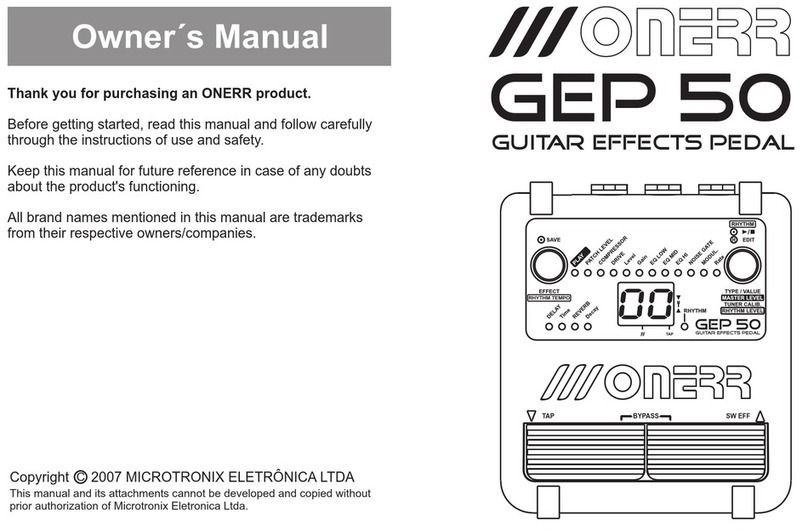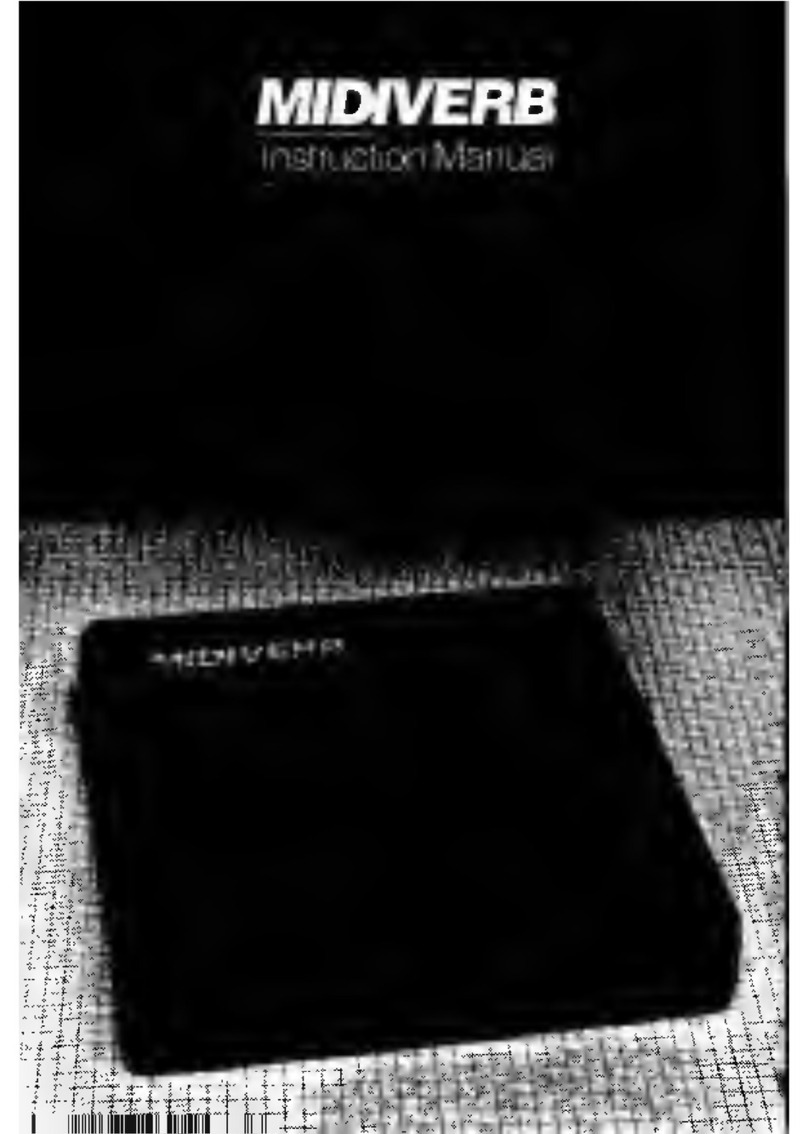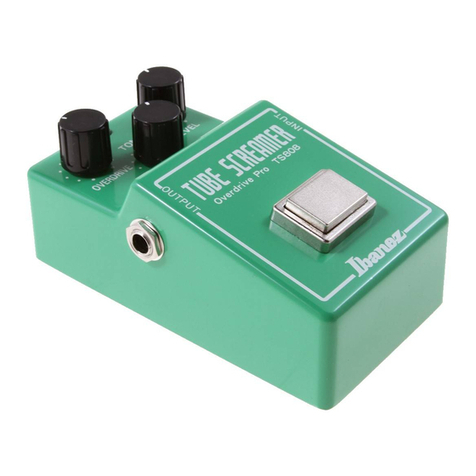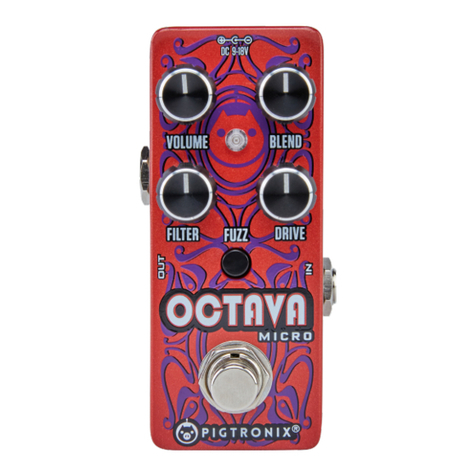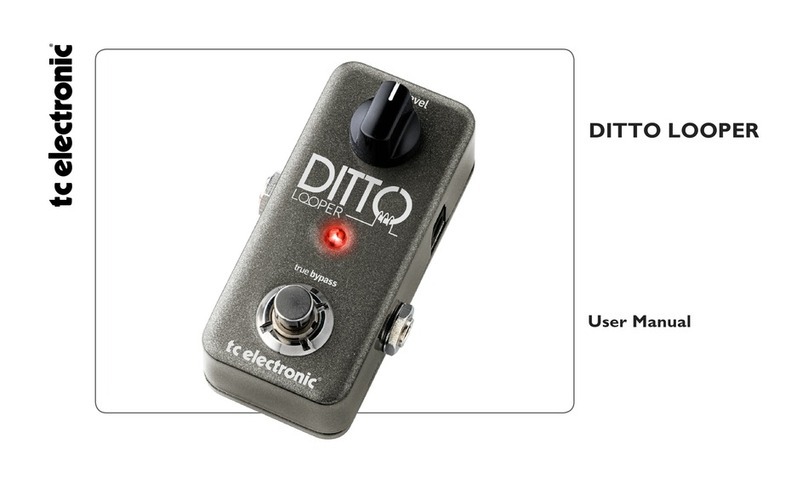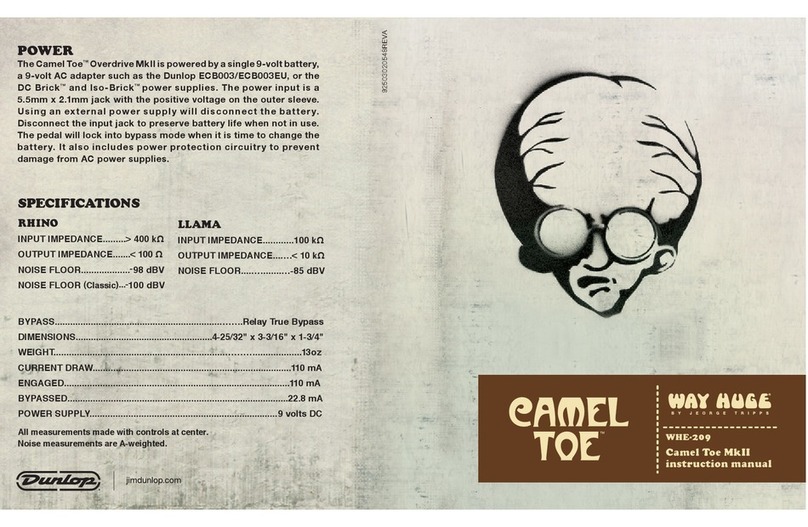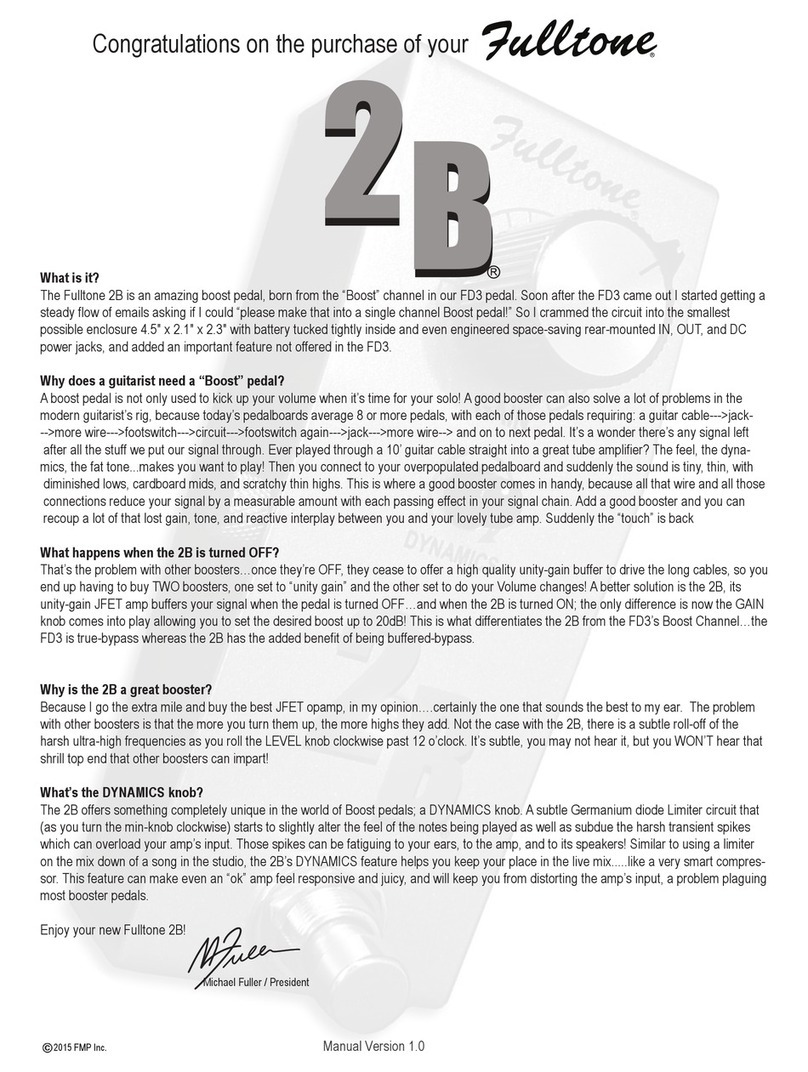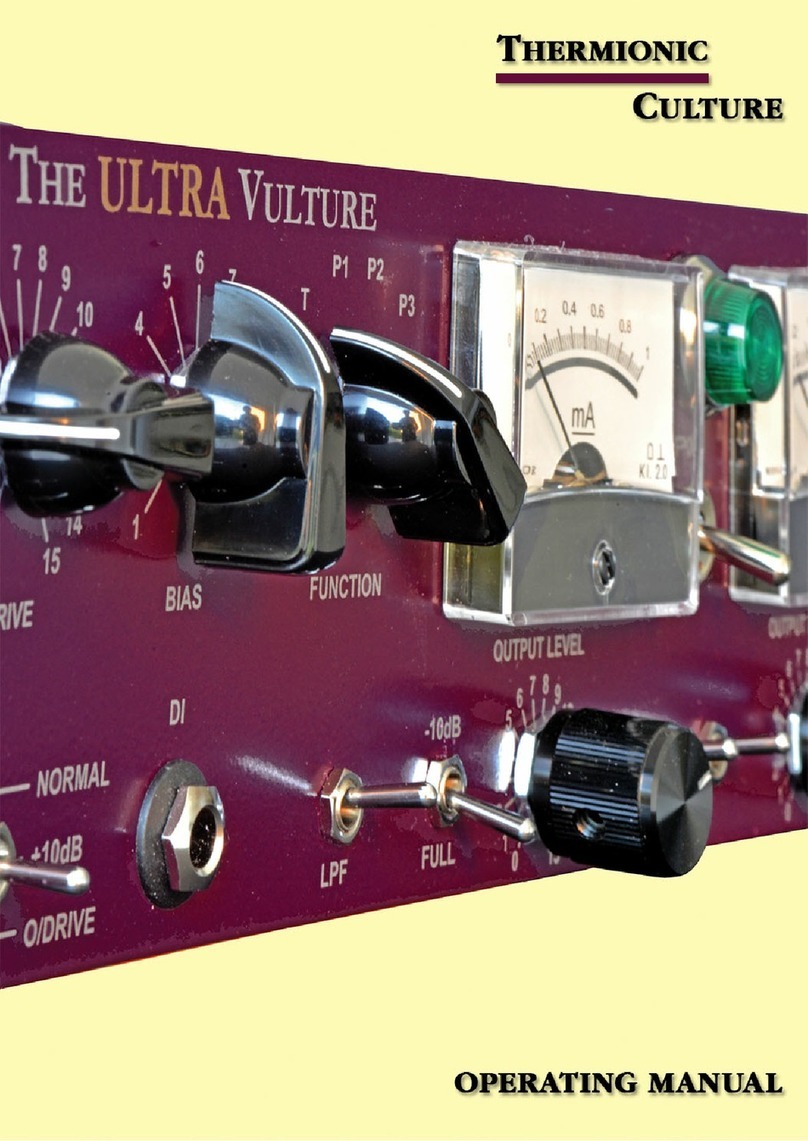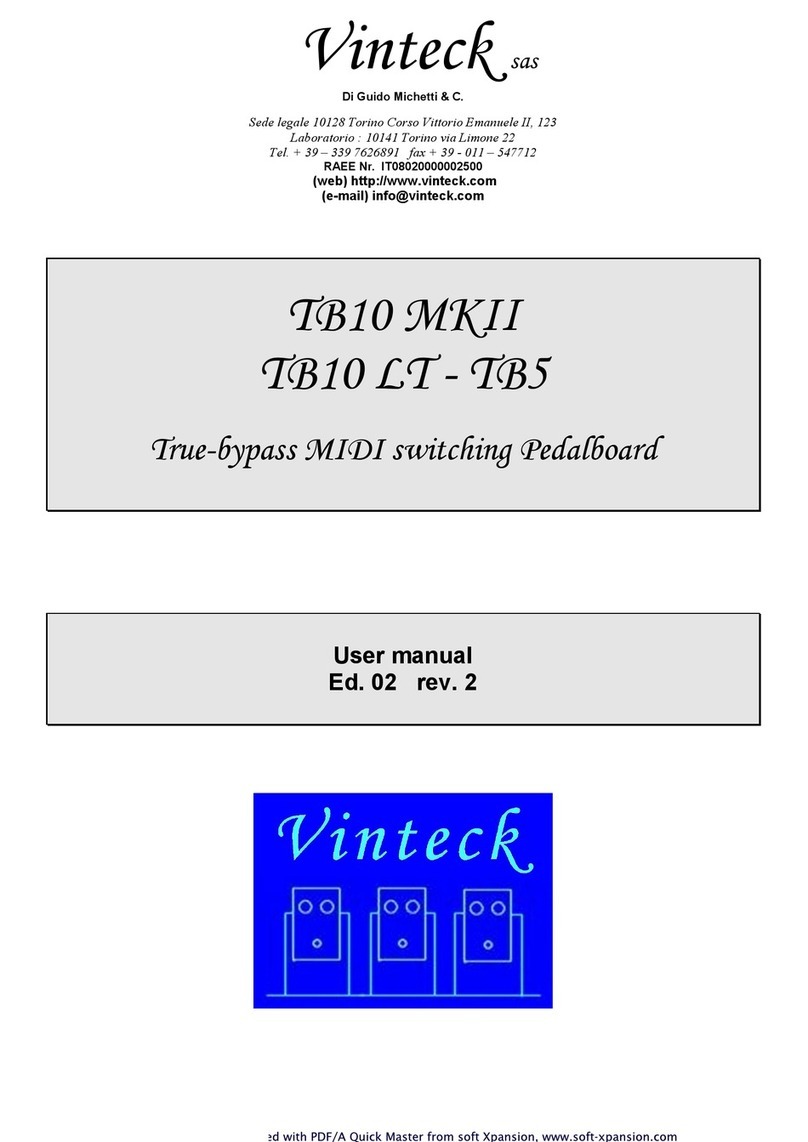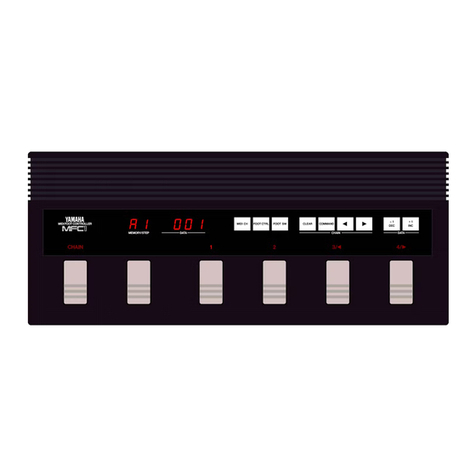Blacet Research ID2510 Improbability Drive User manual

Page 1
BLACET RESEARCH MODEL ID2510
Noise Module
User Manual
Blacet Research 15210 Orchard Rd Guerneville CA 95446
Contents Copyright.
Reproduction by any means including the Internet prohibited without permission.
This document contains proprietary and trade secret information of Blacet Research and is provided
as a service to the module owner. Any unauthorized duplication or transferral may violate trade secret laws.
“Improbability Drive” is a Registered Trademark of Blacet Research.
Contents subject to change without notice.
Improbability Drive
CV
BLACET RESEARCH
CV
CV
LEVEL
WIDTH
BP
LP
MIX
OUT
EXT CLK
CV
DIGITAL
S/H
FREQ
WHITE DIGITAL S/H QUANTIZED
2510
IMPROBABILITY
DRIVE
FILTER
WHITE
DIGITAL
TM

Page 2
CV
BLACET RESEARCH
CV
CV
LEVEL
WIDTH
BP
LP
MIX
OUT
EXT CLK
CV
DIGITAL
S/H
FREQ
WHITE DIGITAL S/H QUANTIZED
2510
IMPROBABILITY
DRIVE
FILTER
WHITE
DIGITAL
Introduction
The ID2510 is a versatile noise producing module, using analog noise as the basic source. Digital noise is produced
by sampling the analog noise with a window comparator and a sample and hold circuit. The sample trip point and
window width are both voltage controlled.
The ID has a built in 12dB voltage controlled filter with low pass and band pass functions that processes a mix of
analog and digital noise.
A second sample and hold circuit samples the filter output for random stepped voltage outputs. A built in voltage
controlled clock or an external clock can be used to step the samples.
The ID also features a digital S/H and quantizer circuit that produces chromatic scale outputs at 1V/octave. A
trimmer on the PCB also allows the quantizer to be tuned to a major, minor or diminished scale.
Separate outputs are provided for filtered noise mix, analog noise, digital noise, S&H and quantizer.
Voltage Control Input
Window Comparator Trip
Level
Voltage Control Input
Filter Center Frequency
Filtered Mix Output
Noise Outputs
Window Comparator
Width
Sample & Hold Clock
Frequency
Mixes White and Digital
Noise for Filter Processing
Voltage Control Input
Voltage Control Input
(Clock Frequency)
Filter Low Pass/Band Pass Select
External Clock Input

Page 3
Controls and Operation
Digital Noise Level and Width Pots, CV Inputs: The internal analog noise source is sent to the “White” output
jack (see below) . It is also processed by a window comparator to generate a type of digital noise.
L to R: White Noise, Digital Noise with clipping at top, Digital Noise with clipping top and bottom.
The Level pot and/or the CV jack sets the comparator signal level. Noise is clipped above this level.
The Width pot and/or the CV jack sets the signal width or “window” where noise is output.
In practice, these controls are best experimented with to produce the best noise character for your application.
Almost any noise frequency from near white to occasional clicks and pops can be realized.
Frequency Pot, LP/BP Switch, CV Input: The internal 12 dB filter’s frequency can be controlled by the pot and/or
the CV jack. The switch selects a low pass or band pass response. The filter’s input is the output of the Mix pot.
Mix Pot, Mix Output: The Mix pot allows mixing white and digital noise. This mix is sent to the filter, and the filter
output is sent to the Mix Out.
S/H Pot, CV Input, External Clock Input: The S/H rate can be clocked by the internal clock via the pot and/or the
CV jack. An external clock can also be used. Plugging in an external clock will bypass the internal one.
White Noise Output: white noise
Digital Noise Output: digital noise
S/H Output: Stepped voltages derived from the filtered noise mix
Quantized Output: Stepped voltages derived from the filtered noise mix, quantized to 1V/oct steps.
Trimmer RT2 Quantizer Scale Select: This is set up with four zones equally spaced. From FCCW to CW, you can
select: chromatic (all the notes on a keyboard), major, minor and diminished.
Power Input Connector J11: This PCB connector requires a source of regulated +15Vdc and -15Vdc power to run
the module. Use a Blacet PS500 supply or the equivalent.
Connections to this connector should be made only when the power supply is OFF and the connector must be
positioned correctly on the pins. As using the wrong supply can cause damage to the unit, please contact us if you
have any questions! Do not attempt to use “wall warts” to power the module.
Specifications
Front Panel Size: 5.25 x 3" W
Module Depth: 6.1”
Input/Output Jacks: 3.5 mm (1/8”)
S/H Clock Frequency Range: 40S to 180 Hz
Filter Frequency Range: 0 to 20 KHz
Noise Outputs: +/-5V max
Power: +/-15 Vdc @+69/-61 mA

Page 4
Block Diagram
The block diagram shows the signal flow of the ID as it proceeds from a high bandwidth source (white noise) through
a series of decreasing bandwidth processes, ending up with random quantized voltage steps.
White Noise Sample/Hold
Level
Width
White
Mix
Digital
Filter Out
Freq.
S/H
Clock
Quantizer
S/H
QuantizerS/H Clock Ext Clock
Window Comparator
Calibration
RT1 Noise Level: If you have an oscilloscope, adjust for about +/-5V swing. Otherwise set to mid span.
RT2 Quantizer Scale Select: This is set up with four zones equally spaced. From FCCW to CW, you can select:
chromatic (all the notes on a keyboard), major, minor and diminished.
RT3 + S2, DAC calibration: This sets the maximum output voltage for the quantizer DA converter.
Set RT2 FCCW.
Remove power from the module. Push S2 and keep it pushed while you restore power. Release S2. Each push of S2
will now alternate between full scale output and “zero” output. Measure the full scale voltage at J10 Quantizer Out
and adjust RT3 for 2.740V. To restore normal module function, cycle the power once more. (Do not push S2).
Troubleshooting, Repair, Warranty
If you encounter problems that you can’t solve, contact us, preferably via e-mail with a description of the problem.
Let us know what does and does not work. We can then help you get your module working. We can fix modules for
a minimum fee of $25.
The parts contained in this unit have been carefully selected and tested. They are guaranteed for 90 days from the
date of purchase.

Page 5
Front Panel Wiring
7.4, 1.5
2.4
1.3
J2
J3
S1
1.8
1.5
J1
J6
J5
J4
COM
2.1
2.1
1
2
3
2.1
6.8
4.2”-3X
1.5
6.4
2.1
J7
J8
J9
J10
6.2
6.6
1.5
1.8
Table of contents


